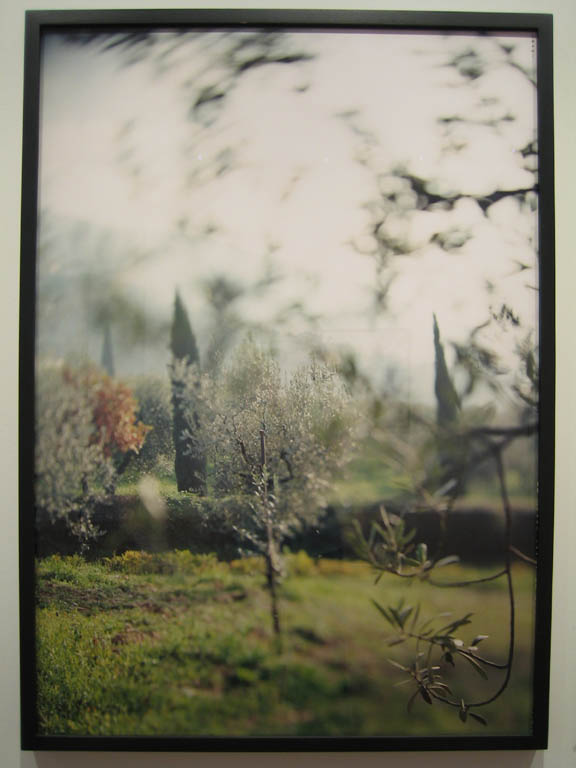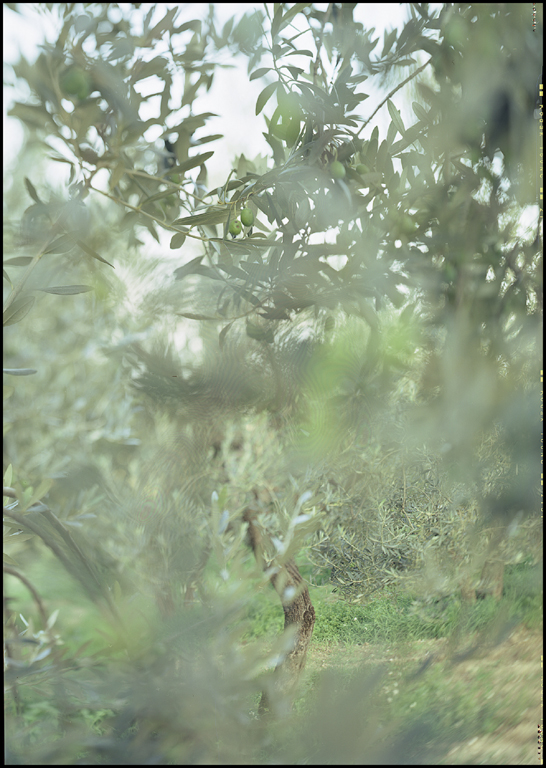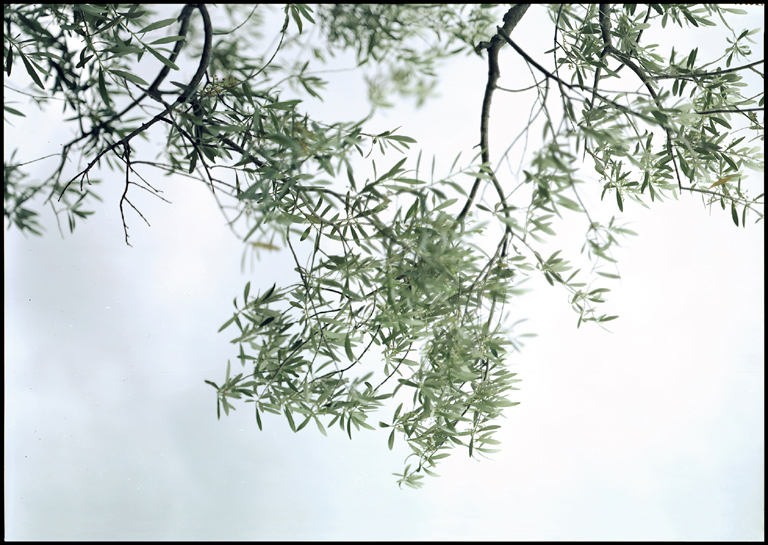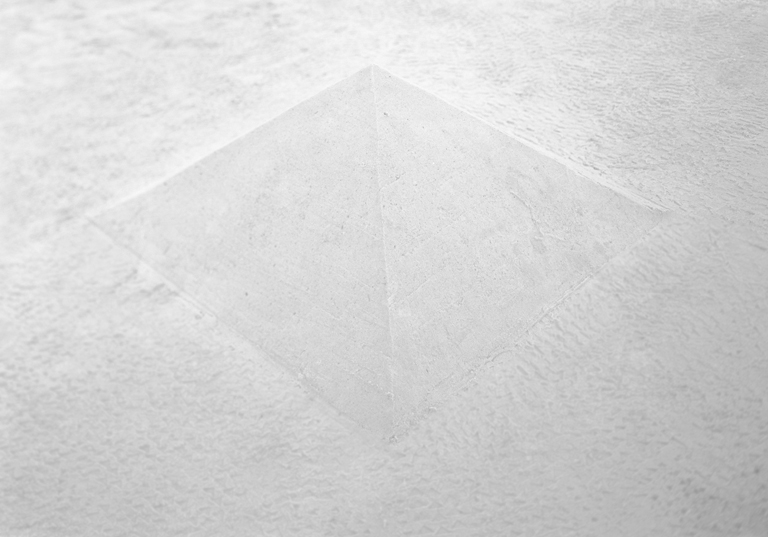Vol 1, No 1: Intimate Dissimulations: JoAnn Verburgs Camouflage at Gallery Co
Cecilia Aldarondo pays a visit to the mysterious groves and pyramids at the new Gallery Co (still in the Wyman building, but on the second floor and not the seventh). It's an experience that has its rewards, though they're difficult to define.





The photograph that lends its title to Joann Verburg’s new show ‘Camouflage’ at Gallery Co. in the Warehouse district might, at first, suggest the term’s literal definition—the strategic use of color and form by an animal or human to blend in with its surroundings for defensive purposes—right down to its drab army green affiliations. Thankfully, however, Verburg’s suite of photographs depicting olive trees, pyramids, and water appears to be dealing more evocatively with the term.
A little deceptive, and always somewhat elusive, there is nothing easy, obvious, or spontaneous about these images. Each one appears constructed with a deliberation and care that demands a similar sort of attention from us when we view them. We can see this kind of meticulousness in Verburg’s manipulation of focus. In many of the olive tree photos, she varies the camera’s focus so deftly that the seeming simplicity of a tangle of branches or cluster of leaves is belied by a whole host of visual shifts. It’s a very subtle form of choreography, in which the images are composed not by their content, but instead by Verburg’s delicate fiddling.
We see this best in Campello Olive Trees for Giulio (2003), in which a small olive tree stands alone in the bottom center of the image. The dead center of the tree is in focus, but the rest is clouded in a halo of blur; in the extreme right corner, half of an olive branch is in sharp focus. Meanwhile the upper half of the image, a gray sky flecked with branches, is so blurred that it becomes kinetic, spinning as if it could give us a touch of vertigo if we look for too long.
In her pyramid photos, Verburg uses an ambiguous perspective to similar effects. Photographed from an aerial vantage point, it’s impossible to tell whether these sand structures are miniscule or enormous, monumental or in danger of disappearing entirely. Through Verburg’s manipulations, what we begin to see is the act of seeing itself, or perhaps the way our sight gets confounded and enhanced by invisible elements such as atmosphere, light, or point of view.
Joann Verburg has written that her many photographs of olive trees are meant to make the viewer feel connected to them. However, she seems to be withholding something in that connection. If these photos invite us into a conversation, it’s not one we’d have with a lover or a dear friend. Not that the substance of our talk would be idle or insubstantial; instead, it’s rather like suddenly stumbling on a very serious discussion with someone you hardly know. It’s intimate, but not personal.
And yet, these photographs don’t leave me completely cold. There is something unexpected, and suggestive, about such reticence. The images, while they frustrate available associations, simultaneously make room for their own.
And so I find myself looking again, and looking longer.
As I wander through the gallery on my second visit, I remember hearing that olive trees, while they don’t grow to be terribly tall, can have phenomenally large root systems. There is something about that invisible, inaccessible power here. Something ancient and elemental, a restrained mysticism. Rather than depicting camouflage, these photos seem to be doing camouflage; if Verburg is speaking to us, mystery seems to be her preferred mode of address.